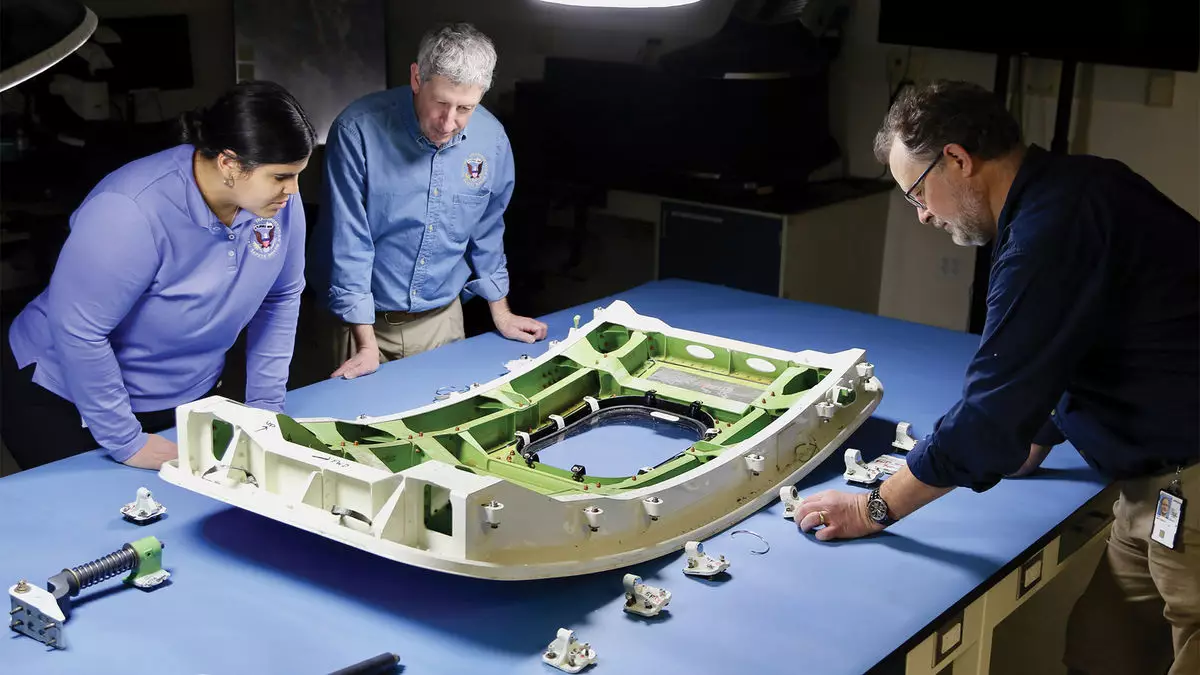The aviation industry is built upon precision, attention to detail, and rigorous safety protocols. Any deviation from these standards can have catastrophic consequences. Recently, an incident involving an Alaska Airlines flight shed light on the importance of proper installation procedures in aircraft manufacturing. A preliminary report by the National Transportation Safety Board (NTSB) revealed alarming findings, painting a picture of potential oversight, negligence, and the need for enhanced safety measures. This incident serves as a stark reminder of how critical it is to adhere to rigorous installation procedures to ensure the safety and well-being of passengers.
A Troubling Discovery
The NTSB report highlighted that the bolts securing the exit-door plug on an Alaska Airlines flight had likely not been reinstalled properly. The 737 Max 9 aircraft had arrived at Boeing’s factory with five damaged rivets, indicating a previous issue with the plug. To repair these damaged rivets, the plug had been removed, necessitating the removal of four bolts that prevent vertical movement of the plug. While records showed that Spirit AeroSystems personnel had replaced the rivets, a photograph obtained from Boeing displayed the door plug with missing bolts. This photograph raised concerns about the installation process and the possibility of inadequate reinstallation after the rivet work had been completed.
One aspect under investigation is whether the door plug had been removed and reinstalled after leaving the Boeing factory. So far, no concrete evidence has been found to suggest that this occurred. However, the investigation is ongoing to determine which manufacturing documents authorized the opening and closing of the left mid-exit door plug during the rivet work. These findings raise questions regarding the adherence to stringent manufacturing protocols and the management of safety risks during the manufacturing process.
Accountability and Response
Boeing swiftly responded to the NTSB’s preliminary report, emphasizing their commitment to transparency. CEO Dave Calhoun acknowledged Boeing’s accountability for the incident and highlighted the urgent need for improvement. Recognizing the gravity of the situation, Calhoun stated, “An event like this must not happen on an airplane that leaves our factory. We simply must do better for our customers and their passengers.” Boeing expressed its dedication to implementing a comprehensive plan to enhance quality control measures and restore confidence among stakeholders. The incident served as a wake-up call for the company, prompting a renewed focus on demonstrable actions and transparency at every stage of the manufacturing process.
The Alaska Airlines incident resulted in the temporary grounding of 171 Max 9 aircraft, primarily operated by Alaska and United airlines. During this period, a thorough inspection regime was established to prevent similar incidents. The spotlight also turned towards Boeing’s Safety Management System specifications and Spirit AeroSystems’ own safety protocols. The NTSB’s assessment will scrutinize the effectiveness of these systems and evaluate the Federal Aviation Administration’s (FAA) oversight of both Boeing and Spirit AeroSystems. These investigations aim to identify any gaps in safety procedures to prevent future occurrences.
Enhanced Oversight and Self-Reflection
Since the incident involving Flight 1282, the FAA and several airlines have increased their oversight of Boeing’s manufacturing process. Heightened scrutiny and stricter adherence to safety protocols are essential in cultivating a culture of accountability and continuous improvement within the aviation industry. Boeing, recognizing the need for independent evaluation, has commissioned an assessment of its quality management system. Additionally, the company has vowed to enhance inspection redundancy to prevent oversights and errors.
The Lessons Learned
The Alaska Airlines incident serves as a compelling reminder of the indispensable importance of proper installation procedures in aircraft manufacturing. It highlights the potential consequences of inadequate attention to detail and the need for strict adherence to safety protocols throughout the manufacturing process. Lessons learned from this incident will not only improve the quality control measures implemented by Boeing and Spirit AeroSystems but also reinforce the overarching commitment of the aviation industry to passenger safety. By embracing these lessons and making tangible changes, the aviation industry can ensure the skies remain safe for all those who travel through them.


Leave a Reply